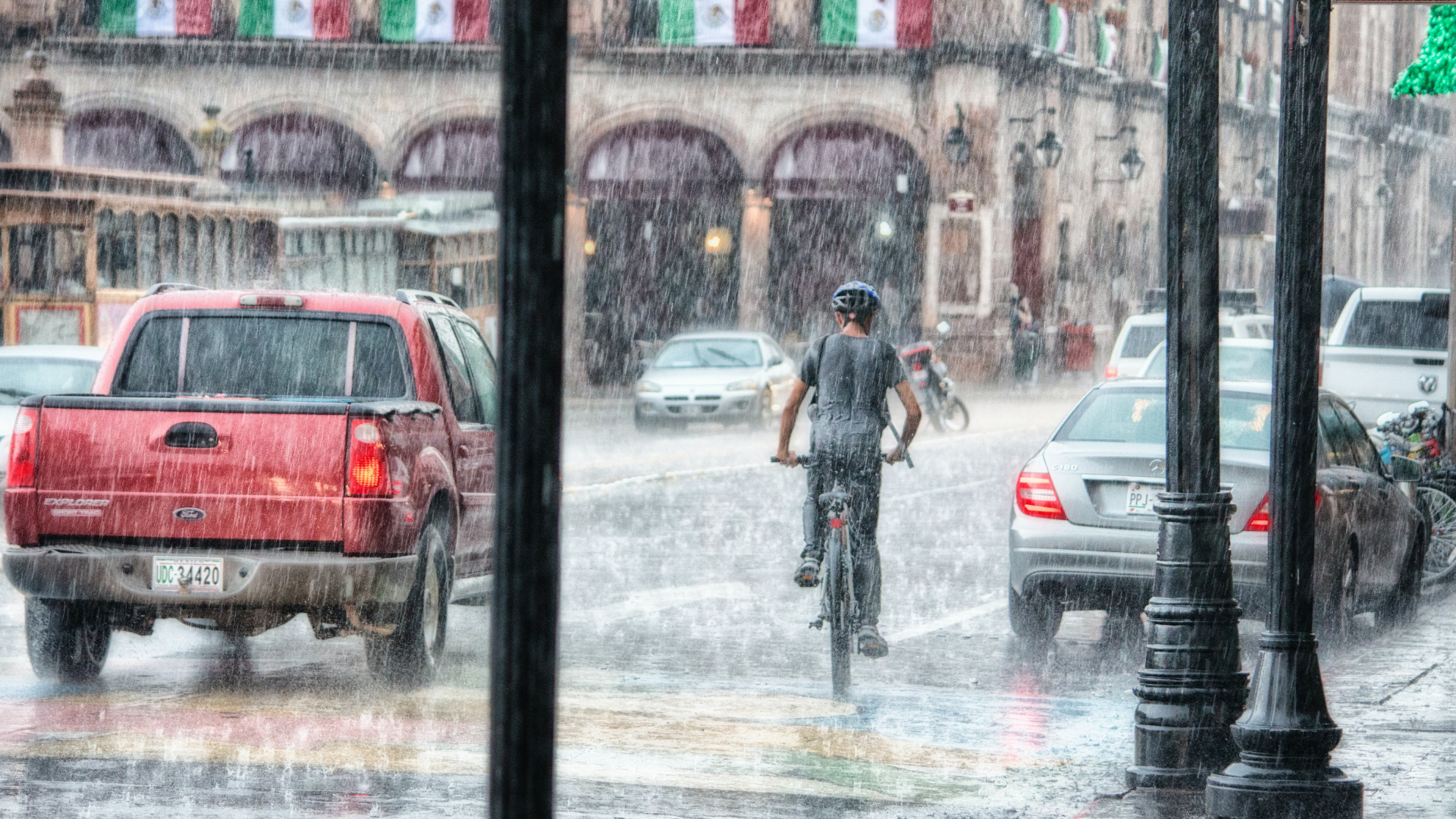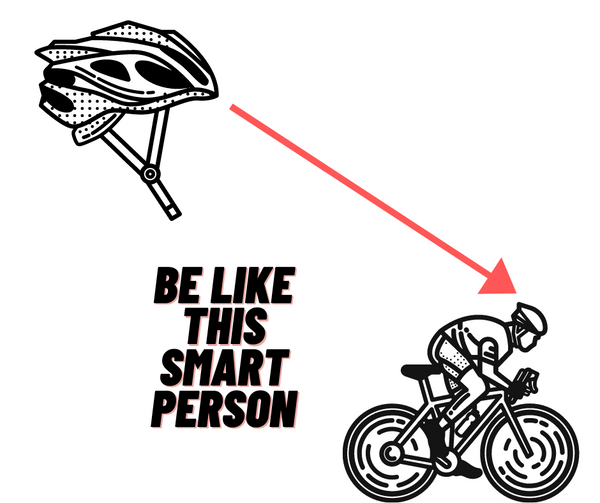
Defensive Riding 101
| Marketing Team
We’ve all heard about defensive driving.
In some places taking a course in it can even lower your insurance. And while you don’t need insurance to ride an electric bike, there are still plenty of good reasons to know defensive riding practices while you are on the road.
Wanna find out? You’re in the right place! We’re sharing some defensive riding practices that can help you get a safer ride while you are on the go in your Electric Bike or Scooter.
Baby steps- let’s start with “What is Defensive riding”?
Defensive Driving is a set of skills, maneuvers, and techniques that will allow you to defend yourself against the situations that can create a collision. By extrapolation, defensive riding is similar- it is a set of skills, techniques and preparations that will allow you to defend yourself against possible accidents and collisions.
To start a crash course on defensive riding, we need to start at the street level. There are “positions” of riding you can take that have benefits and drawbacks.
POSITION ONE- Hugging The Curb
Position one is your “hug the curb” position. You’re riding as far right as you can. This can be a tempting spot for a new rider, who wants to get as far from cars as possible, but it’s important to be aware of that curb. You don’t want to get thrown off balance by going into a gutter or hitting a curb- and you don’t want to get trapped with no space to move right if you need to.

POSITION TWO- Centre Position
Position two is a primary position- this is leaning towards the right side of the bike lane, without hugging a gutter. This position allows you to stay in the flow of traffic while still allowing other bikers, and riders to pass you when needed. This is a comfortable position for many- which can sometimes lead to congestion on busy streets or the requirement to maintain a certain speed to “keep with the flow of traffic”. This position can make it more difficult for you to change lanes, or turn left.

POSITION THREE- Passing Position
Position three is sometimes considered the “passing lane” of biking. You’re moving as far left as you’re safely able to, basically taking up the center of the lane. This is for passing, or speeding, but you want to be careful here too, because this position puts you close- or possibly in the way- of larger vehicles.

Alright! And now that we’ve got that out of the way, let’s get headed in the direction of some defensive riding tips, tricks and tactics.
SPACE
Alright team, so we have our positions. Let’s go over some defensive driving tips and tricks. To start, SPACE- always give yourself more space than you think you will need, and even more when you're riding in unfavorable conditions. The most important factor in providing yourself more space than you might think you need is simple- if there is a sudden emergency, you’ll need space to slow and stop. In cases like these, distance is your friend.

UNDERSTAND THE RULES OF YOUR ROAD
Know the local driving and riding rules and regulations in your area. Be familiar with the highway code in your location. Signal early and clearly, and ride within the legal rules of the road.
DON'T RIDE ON THE SIDEWALK
Remember when we said you should know the rules of the road you’re riding on? Well this comes in handy when you are considering riding on sidewalks.
Riding a bike on a sidewalk is legal under a certain age range, although that age can change based on where you live. If you’re old enough to ride on the street, you should. And while this might feel scary at first, it can make you safer in a lot of ways.
First, if a car is driving on the street and you are on the sidewalk, they likely won’t be paying you much attention. This is great in theory- but if you cross a road on your bike or exit the sidewalk suddenly for any reason, you run the risk of catching a driver unaware- and that can be dangerous and potentially deadly.
If you’re an adult, and riding an Ebike, being on a sidewalk is unfair and potentially unsafe foot traffic. Taking up the sidewalk could push them outside of the safety of their designated area of the public space.
Finally, if you are riding on the sidewalk when you are legally supposed to be riding on the street, you will not be in a great position in the event of any accident. If you are legally meant to be on the road, and an accident befalls you while you are deviating from that protocol, you may face additional challenges if anything goes wrong.
RIDE LIKE OTHERS THINK YOUR INVISIBILE/ BE VISIBLE
For safety and legality you will want to be as visible as possible. In the unfortunate event that an accident does occur, your visibility will be a major factor in your favor.
The tip “Ride Like You’re Invisible” might sound counter intuitive, but perhaps a more direct way to say this is “Ride As Those Cars Have Difficulty Seeing You”.
Reflectors, Tail lights, loud bells or horns, bright colors- all of these things help you get noticed. You’re on a physically smaller, and less fortified machine than a car on the road with you, so you want to make sure they see you, so they can ensure to give you the space you need for safety.
HEAD PROTECTION
C’mon folks, you knew this was coming. Wear a helmet! There has been some buzz around the idea that some studies show drivers of cars tend to be less careful around Bikers with Helmets- possibly because they assume that the helmet will always keep them safe, but that has been contested. In reality, you’re also wearing a helmet to protect you not just from hitting a car- but from hitting your head on the ground if you fall. THAT’S where helmets can really save your life.

GEAR AND GADGETS
Some defensive riding gear may come with your model, like turn signals, headlights and rear lights. But there are additional accessories you can acquire that can assist you with defensive riding. Installing side mirrors can be a huge asset in a situation like this. Things like Tactical Gloves can offer you additional grip and flexibility during inclement weather, which provide a defensive layer of protection. And additional reflectors can be incredibly useful to remain visible- a crucial aspect of riding defensively.

LISTEN TO THE ROAD / USE ALL YOUR SENSES
Of course, you must use your eyes while riding, and keeping a keen visual awareness of your surroundings is paramount to staying sage. But it’s a good idea to utilize all your senses on the road! Of course, it’s tempting to listen to music while riding and it is possible to do so safely, but when you are riding on a busy street, you may benefit from being able to hear the road as well as see it.
LOOK LEFT BEFORE MOVING LEFT- ALWAYS
Just like with driving a car, you should always look before you make any directional change. For riding on an urban street, this is especially important for moving LEFT which will likely be into traffic, at least in the vast majority of city streets. If you have those side mirrors- this is the time to use them. Always look. And look all ways.

AVOID FAST SWERVING WHEN YOU CAN
Ebikes are FAST. But they are NOT faster than cars. So it’s best to signal early and avoid swerving quickly. You’ll need to remember that other drivers in bigger cars need more time and distance than you do to slow down, stop or change lanes.
ALWAYS POINT TOWARDS THE SAFEST PLACE TO LAND
If you are in a dangerous situation, and have to act quickly, always aim your bike towards the safest direction and stop as steadily as you can. It’s always possible for your to go over the handlebars, especially at higher speeds, so pointing your unit in the direction clearest of obstacles, or at least away from traffic might be the safest thing you can do in the heat of the moment.

STREETS RIDE ON NON-BUSY STREETS
When possible, try to ride on non-busy streets, and only use backroads on weekends in times of reduced driving. This is because those back roads can sometimes be more dangerous, as it’s more likely for a car to speed on an unused backroad. If this is happening at night, you’re at higher risk due to visibility and danger.
RIDE WITH (NOT AGAINST) THE FLOW OF TRAFFIC
You want to ride WITH traffic, not against it. You might think riding against traffic is a benefit, as you can see the cars head on and avoid them, but this can side-tract and endanger your fellow riders, plus, it is going against the flow of traffic and the rules of most roads.

YOUR MINDSET IS YOUR BEST DEFENSE
The fact is, when you’re practicing defensive riding your very best tool is your mindset. Ride like you are NOT invincible. Ride like you COULD BE HIT at any time. This isn’t to scare you- its to keep you aware. Confidence is key, and confident riders, ride defensively.

SOURCES
https://totalwomenscycling.com/commuting/defensive-cycling-tips
https://bicyclesafe.com/
https://bicyclesafe.com/

Leave a comment
Your email address will not be published.